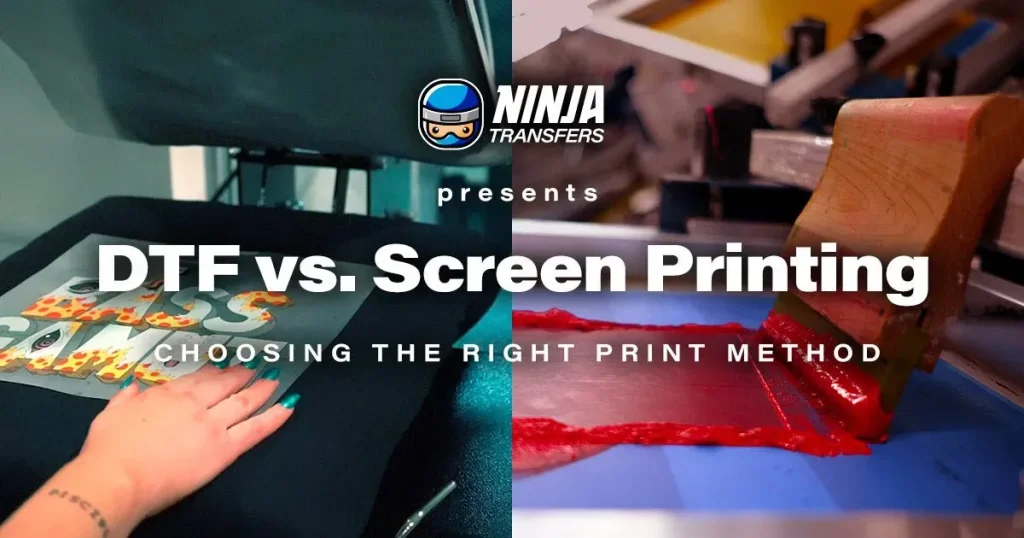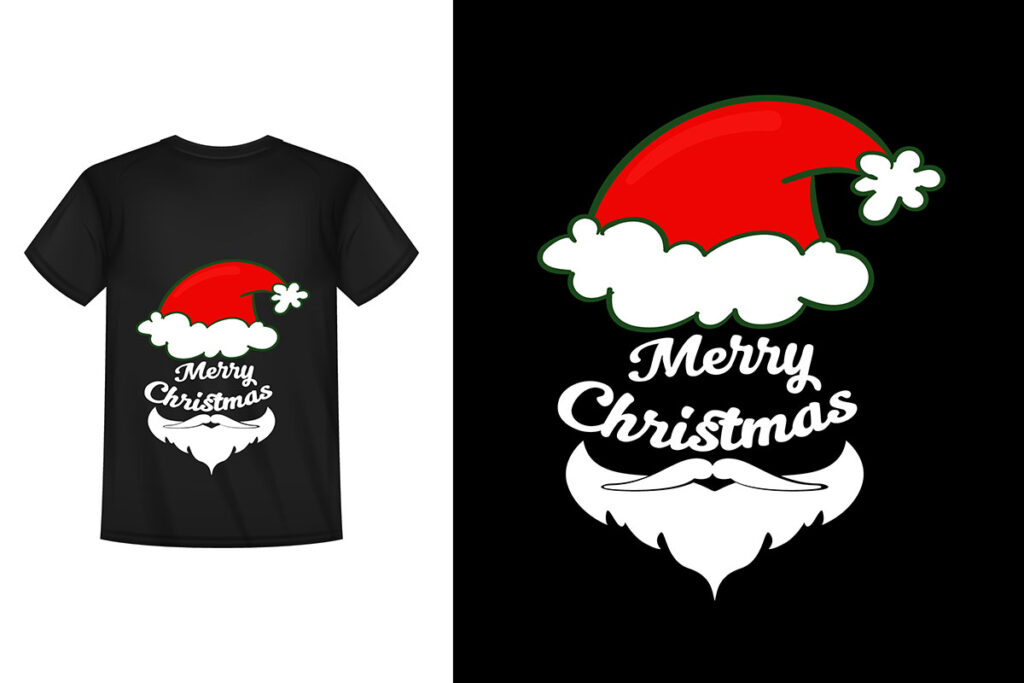When comparing DTF Transfers vs Screen Printing, it’s essential to understand the unique benefits that each printing process brings to custom apparel printing. DTF (Direct-to-Film) transfers have recently gained popularity for their ability to produce intricate designs with vibrant colors, offering quality that stands out, especially in smaller orders or complex artworks. On the other hand, screen printing presents a time-tested option that excels in large production runs with its cost-effectiveness and durability. This screen printing comparison not only highlights the differences in technique but also showcases the versatility and practicality of DTF printing, especially for modern demands. In this exploration, we will delve into the specifics of these printing techniques, examining their applications, advantages, and suitability for various needs.
In the realm of customized apparel, choosing the right method for your printing needs can be pivotal. This analysis of DTF printing and traditional screen printing introduces two popular techniques that serve the ever-growing market of personalized clothing. DTF transfers offer a modern approach to achieving detailed prints, while screen printing remains a staple for its efficiency and durability established over decades. By examining the strengths and weaknesses of these methods, you can make an informed decision on which printing technique aligns best with your vision for custom designs and projects. Whether you require vibrant colors for a small batch or a sturdy finish for bulk orders, understanding these printing options is key to successful apparel creation.
The Benefits of DTF Transfers in Custom Apparel Printing
DTF Transfers, or Direct-to-Film transfers, present numerous advantages for custom apparel printing, particularly when it comes to versatility and detail. One of the primary benefits is the ability to print vibrant designs with numerous colors directly onto various fabric types without the limitations that traditional methods, like screen printing, often impose. This flexibility makes DTF transfers exceptionally suitable for small businesses and individual creators, allowing them to produce high-quality products that meet diverse customer needs.
Moreover, DTF printing techniques accommodate intricate designs, enabling creators to bring their complex ideas to life without sacrificing quality. Photographic images, multi-color gradients, and fine details are rendered exceptionally well through this method. As the demand for more personalized and unique apparel increases, DTF transfers prove to be an appealing option for those looking to stand out in the competitive custom apparel market.
Exploring Screen Printing Comparison to DTF Methods
When comparing screen printing to DTF Transfers, several factors emerge that highlight the unique strengths of each technique. Screen printing remains a traditional practice known for its efficiency in producing large quantities of apparel with consistent quality. It is often favored for bulk orders due to its cost-effectiveness, making it ideal for businesses looking to maximize profitability through high-volume sales.
However, the limitations of screen printing become more apparent when addressing design complexity. Each color in a design necessitates a new screen, which can inflate both setup times and costs, especially for intricate artworks. In contrast, DTF Transfers streamline this process, allowing for intricate and colorful designs without the need for multiple screens, thus offering a compelling option for custom apparel creators looking to push their creative boundaries.
Cost Analysis of DTF Printing Techniques
Cost efficiency is a critical consideration for anyone delving into custom apparel printing, and DTF transfers present an attractive option for those handling small to medium-sized orders. The setup costs associated with DTF printing are often lower than those of screen printing since there are no screens to create. This aspect significantly lowers the barrier for entry, allowing designers and small businesses to produce eye-catching apparel without needing to make substantial upfront investments.
In cases where larger orders are required, the balance shifts, and screen printing can become more economical. The cost of producing each additional shirt decreases with the volume, making it an ideal choice for mass production scenarios. Therefore, when analyzing costs, consider the size of your order, and match your printing method accordingly to ensure that you achieve the best value for your investment.
Fabric Compatibility in Custom Printing
Fabric compatibility plays a significant role in determining the best printing method for your project. DTF Transfers excel in this aspect, providing a robust option for various materials, including cotton, polyester, and blends. This broad compatibility allows businesses and designers to expand their product offerings, catering to diverse customer preferences and fabric choices without compromising print quality.
In contrast, traditional screen printing may face challenges when working with synthetic fabrics due to adhesion issues with various inks. Utilizing specialized inks can mitigate these concerns, but this adds complexity and potentially increases costs. Hence, for those prioritizing versatility in fabric options, DTF Transfers serve as a dependable solution, simplifying the customization process across a wide array of garment types.
Durability and Longevity of Printing Techniques
Durability is a crucial factor when choosing between DTF Transfers and screen printing for custom apparel. Screen printing is recognized for producing long-lasting prints that withstand repeated washing and wear, making it an excellent choice for items that undergo heavy use, such as uniforms or promotional merchandise. The durability of screen prints is a significant advantage, ensuring that the design remains vibrant and intact over time.
On the other hand, DTF Transfers have made remarkable strides in durability, but results can vary based on factors such as transfer quality and application techniques. With advancements in DTF technology, high-quality transfers can offer respectable longevity, though they might not match the longstanding reputation of screen printed garments. Understanding how each method holds up under different conditions can guide your decision towards achieving the best results for your specific project.
Current Trends in DTF Printing Technology
In recent years, there has been a noticeable shift towards DTF Transfers in the custom printing industry, driven by technological advancements and the growing demand for unique apparel solutions. DTF technology has become increasingly accessible, allowing even small businesses to produce high-quality custom garments efficiently. This trend reflects a broader movement towards personalization in fashion, where consumers are actively seeking out distinct designs that cater to their individual tastes.
As the printing landscape evolves, DTF Transfers are poised to solidify their position alongside traditional methods like screen printing. The rise in on-demand printing solutions, coupled with the ability to respond rapidly to market trends, underscores the value of DTF printing in meeting contemporary consumer demands. As companies adapt to these trends, they can leverage the benefits of each printing technique to create compelling offerings that resonate with their target audiences.
Frequently Asked Questions
What are the main differences between DTF Transfers and Screen Printing?
DTF Transfers and Screen Printing differ significantly in their processes and outputs. DTF Transfers involve printing a design onto a specialized film that is heat-pressed onto fabrics, offering vibrant colors and intricate details, ideal for complex designs. In contrast, Screen Printing pushes ink through stencils onto the fabric, making it more cost-effective for large orders but less suitable for intricate designs due to the need for separate screens for each color.
Are DTF Transfers more cost-effective than Screen Printing for small orders?
Yes, DTF Transfers are often more cost-effective for small orders compared to Screen Printing. DTF does not require extensive setup costs associated with screen printing, making it ideal for smaller quantities. This economic advantage allows custom apparel makers to produce designs without incurring higher costs that come with screen printing setup.
How does the fabric compatibility of DTF Transfers compare to Screen Printing?
DTF Transfers are highly versatile in terms of fabric compatibility, adhering well to various materials like cotton, polyester, and blends. Screen Printing, while also versatile, can face limitations with certain synthetic materials unless specialized inks are used, making DTF a more reliable choice for diverse fabric options.
Which printing method offers better durability: DTF Transfers or Screen Printing?
Screen Printing is known for its durability, resulting in long-lasting prints that resist fading, making it ideal for frequently washed items like uniforms. While DTF Transfers can also be durable, their longevity may depend on the transfer process quality; however, they might not match the established durability of screen printing.
Can DTF Transfers handle intricate designs better than Screen Printing?
Yes, DTF Transfers are particularly adept at reproducing intricate designs and details due to their digital printing method, which allows for high fidelity and complex color gradients. Screen Printing, however, may struggle with very detailed or complex designs due to the requirement of separate screens for each color, limiting its capacity for detail.
What are the recent trends influencing the choice between DTF Transfers and Screen Printing?
Recent trends in the printing industry show a shift towards DTF Transfers due to the increasing demand for customization and on-demand printing. Technological advancements have improved DTF methods, making them more accessible and appealing for small businesses seeking unique apparel designs, while screen printing remains favored for its cost efficiency in larger production runs.
| Aspect | DTF Transfers | Screen Printing |
|---|---|---|
| Printing Process | Digital printing on specialized film. | Ink pushed through a stencil onto material. |
| Best For | Photographic images and intricate designs. | Large runs with fewer colors. |
| Cost Efficiency | More economical for small orders due to no setup cost. | Cost-effective for large orders with amortized setup costs. |
| Fabric Compatibility | Adheres well to various fabrics including cotton and polyester. | Limited adherence to some synthetic materials. |
| Durability | Durable but variable based on quality of transfer process. | High durability and resistance to fading, ideal for frequent use. |
| Industry Trends | Growing popularity for customization and on-demand printing. | A traditional method with a solid reputation. |
Summary
DTF Transfers vs Screen Printing is a common consideration for those looking to customize apparel, as both methods offer distinct benefits and challenges. DTF Transfers stand out for their ability to capture intricate details and vibrant colors, making them ideal for complex designs, while Screen Printing excels in producing durable prints, particularly in bulk quantities. Evaluating your specific project requirements in terms of order size, fabric type, and design complexity will help you determine which method is best suited for your apparel customization needs. Ultimately, both techniques have unique advantages that can cater to different aspects of printing and fabric choices.



